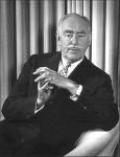Southern
Source Ross Address
The highly lucrative cotton crop of 1860 emboldened the South to challenge the economic powerhouse of the North
In the mid- to late summer of 1860, billions of soft pink and white Gossypium hirsutum blooms broke out across South Carolina, Georgia, western Tennessee, Mississippi, Alabama, Arkansas, Louisiana, and Texas, soon to morph into puffy white bolls.
In one momentous decision, Robert E. Lee spared the United States years of divisive violence
As April 1865 neared, an exhausted Abraham Lincoln met with his two top generals, Ulysses S. Grant and William Tecumseh Sherman, to discuss the end of the Civil War, which finally seemed to be within reach.
A story that the Confederate president donned a petticoat to evade capture emerged right after Union cavalrymen apprehended him in Georgia at war’s end. But is it true?
South Carolina severed ties with the Union not out of concern for states' rights but because of slavery
At 7 p.m. on Thursday, December 20, 1860, some 170 men marched through the streets of Charleston, South Carolina, walking from St. Andrews Hall to a new meetinghouse amid the cheers of onlookers. Half of them were more than 50 years old, most well-known.
A southern writer analyzes the handicaps unwittingly laid on the general by President Davis
A Lee descendant finds two long-lost trunks full of family memorabilia in a Virginia bank vault
New research shows that Lee's momentous decision to fight for the South was far from inevitable.
From Richmond to Appomattox Court House, roads unchanged for 140 years tell the story of the final days, the final hours of the Confederacy
It’s hardly more than the size of your bedroom, half of it living quarters, the rest the office. “What about a bathroom?” I ask National Parks Ranger Tracy Chernault.
Five thousand miles below Mason-Dixon line, a Brazilian community celebrates its ties to antebellum America
Drawn to the story of the fearsome Confederate raider by a modern act of violence, the author finds a strange epic in the Rebel’s restless remains
At approximately 2:30 P.M. on October 30, 1992, two maintenance men lowered a white fiberglass child’s coffin into a shallow grave in the Fourth Street Cemetery, in Dover, Ohio.
How to know the unknowable man
In 1905, on a visit to Richmond, the noted man of letters Henry James was struck by the sight of the equestrian statue of Robert E. Lee high atop its pedestal overlooking Monument Avenue.
At war’s outbreak a frightened commander was ready to give away the Union’s greatest navy yard
The calamity was already full blown when Abraham Lincoln took office on March 4, 1861. South Carolina had left the Union three months back, and six states had followed her out.
The more fiercely the Confederacy fought for its independence, the more bitterly divided it became. To fully understand the vast changes the war unleashed on the country, you must first understand the plight of the Southerners who didn’t want secession.
Americans tend to think of the Civil War as a titanic struggle between two regions of the country, one united in commitment to the Union, the other equally devoted to its own nationhood. Yet neither North nor South was truly unified.
AN INTERVIEW WITH C. VANN WOODWARD
PRESIDENT LINCOLN MOVES AT LAST
Influence of “Advanced Republicans” Seen as Crucial to the Outcome
THE UNION UNITED STILL
THE PRESIDENT’S TACT & COURAGE
HE WAITED ON THE PROPER HOUR
JUBILATION AMONG THE BLACKS
They Stand Ready to Defend With Arms the Rights Thus Gained
NEW LIGHT SHED ON THE PARTICULARS OF THE GREAT DRAMA
When the cold, fastidious Mississippian rose to speak, a hush fell over the crowded Senate chamber. It was January 21, 1861, and Jefferson Davis and four other senators from the Deep South were here this day to announce their resignations.
It was easy enough for an excited and passionate South to pass secession resolutions in 1861—yet harder than it thought to get away from the Old Flag.
Branded a traitor by the government he once served, John C. Breckinridge ran a perilous race for freedom rather than risk capture by the North
The weather in the Straits of Florida was turbulent in June of 1865. Throughout that spring the Caribbean boiled from one storm after another, but this latest one was particularly severe.
Captain Semmes was spoiling for a fight—and Winslow of the U.S.S. Kearsarge was waiting for him, just off Cherbourg
Early in 1864 the Confederate States Steamer Alabama left the Indian Ocean and headed for European waters.
A choice between life and honor is a fearful one for any man. Here is the unforgettable story of how it was made by a twenty-one-year-old Confederate private.
The dawn seemed reluctant to break through the dismal skies over middle Tennessee on November 27, 1863, and by ten o’clock the gray clouds had given way to rain. The drops fell on soldiers of the 81st Ohio Infantry drawn up around a gallows on Seminary Ridge, just outside the town of Pulaski, and on a slender youngster in gray seated on a coffin in an army wagon that rumbled toward the hollow square of troops.
On the eve of the Civil War differing loyalties sent some West Pointers north, others south, but their academy friendship survived the conflict.





